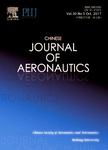Numerical studies on supersonic spray combustion in high-temperature shear flows in a scramjet combustor
Numerical studies on supersonic spray combustion in high-temperature shear flows in a scramjet combustor作者机构:School of Power and Energy Northwestern Polytechnical University Xi'an 710072 China School of Aerospace Engineering Tsinghua University Beijing 100084 China Department of Mechanical Engineering College of Engineering University of Canterbury Private Bag 4800 Christchureh 8140New Zealand
出 版 物:《Chinese Journal of Aeronautics》 (中国航空学报(英文版))
年 卷 期:2018年第31卷第9期
页 面:1870-1879页
核心收录:
学科分类:082502[工学-航空宇航推进理论与工程] 08[工学] 0825[工学-航空宇航科学与技术]
基 金:the partial finical supports from the National Natural Science Foundation of China(No.51676111) the Joint Fund of the National Natural Science Foundation of China and the China Academy of Engineering Physics(No.U1730104) the Tsinghua University Initiative Scientific Research Program,China(No.2014Z05091)
主 题:Combustion Flame kernel Mixing layer Numerical simulation Shearing vortex Spray flame Supersonic flow
摘 要:Numerical simulation is applied to detail the combustion characteristics of n-decane sprays in highly compressible vortices formed in a supersonic mixing layer. The multi-phase reacting flow is modeled, in which the shear flow is solved Eulerianly by means of direct numerical simulation, and the motions of individual sub-grid point-mass fuel droplets are tracked *** combustion behaviors are studied under different ambient pressures. Results indicate that ignition kernels are formed at high-strain vortex braids, where the scalar dissipation rates are *** flame kernels are then strongly strained, associated with the rotation of the shearing vortex, and propagate to envelop the local vortex. It is observed that the flammable mixtures entrained in the vortex are burned from the edge to the core of the vortex until the reactants are completely consumed. As the ambient pressure increases, the high-temperature region expands so that the behaviors of spray flames are strongly changed. An overall analysis of the combustion field indicates that the time-averaged temperature increases, and the fluctuating pressure decreases, resulting in a more stable spray combustion under higher pressures, primarily due to the acceleration of the chemical reaction.



